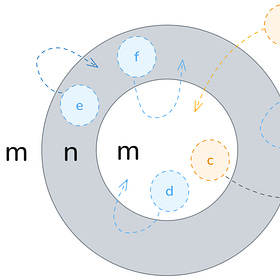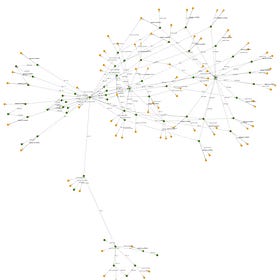Containment (series)
Containment, besides being the very architecture of our material world, is a fundamental organizing principle of life, language, and thought.
This series reveals the power of containment in an attempt to bring attention to some qualities concealed by the dominant symbolic representations in math, science and technology.
This first essay explores all kinds of containers, from the biological cell to the physical and metaphorical containers we create. It concludes with a review of containment in philosophy and logic, a theme to be expanded in future posts.
Perfect Continence
We learn about numbers in school. Nobody tells us what numbers are, except that they represent quantity or position. Instead, we are asked to memorize symbols and combinations of symbols for each number.
The second one is about mathematical and philosophical foundations, based on a single relationship, that of containment. This is the Calculus of Indications of George Spencer-Brown, presented in his book Laws of Form (1969). Over half a century since the publication, his work is mostly unknown, misunderstood and underappreciated. William Bricken explains:
His text is notorious. The academic analysis, enthusiasm, controversy and rejection of Spencer Brown’s work is widely based on a severe misunderstanding that Laws of Form describes conventional logic, which it does not. The text becomes much more controversial when it is taken for what it actually is: a postsymbolic foundation for rigorous thinking.
This essay is another attempt to present this foundation, trying out some new ways of explaining and adding some new perspectives.
Boundary Logic
If you could design math and computing from scratch and without assumptions, what would it look like?
Building on Laws of Form, Boundary Logic is even more extreme in not allowing anything other than containment. It eliminates the cases that imply other relations than containment. Boundary logic adds the operation of pervasion. Pervasion treats boundaries as semi-permeable. Replicas are created inwards and deleted outwards.
Boundary logic forms the foundation of unary computing, developed within the Natural Computing Project. Based on void-equivalence and allowing parallel operations, unary computing demonstrated advantages over binary computing.
Universal Data Façade (Part 1)
Data formats evolve as solutions to specific problems. They combine structure and semantics in their own unique way. That’s how we now have many different species of data formats. Each has its strengths and weaknesses. None is universally good, and none is bad in all application cases.
What is common between all data structures? Yes, containment. Word documents contain paragraphs, bullets, tables and images. Excel workbooks contain spreadsheets containing cells. PowerPoint slide decks contain slides, containing titles, text, bullets, hyperlinks and images. XML files contain elements containing attributes, text nodes, and other nested elements, forming a hierarchical tree structure defined by tags. JSON files contain objects containing key–value pairs and arrays, which in turn contain other objects, arrays, or primitive values such as strings and numbers.
Façade-X presents homogeneously heterogeneous data structures using the relation of containment.
Universal Data Façade (Part 2)
Façade-X is a way to represent any data source as an RDF graph. What all data structures share is that they can be seen as nested containers. The reference implementation of Façade-X is called SPARQL Anything. To query or transform any source structure, all you need is to know SPARQL. Once you do, you can SPARQL anything.
Other series
Serendipity Protocol (series)
In this series, I will share some perspectives, patterns and practices on serendipity. This work should lead to the fourth p, protocols.
Autonomy and Cohesion (series)
The Autonomy and Cohesion balance is an essential dynamic that determines the viability and welfare of all socio-technical systems, including organizations, biological systems, and networks.









